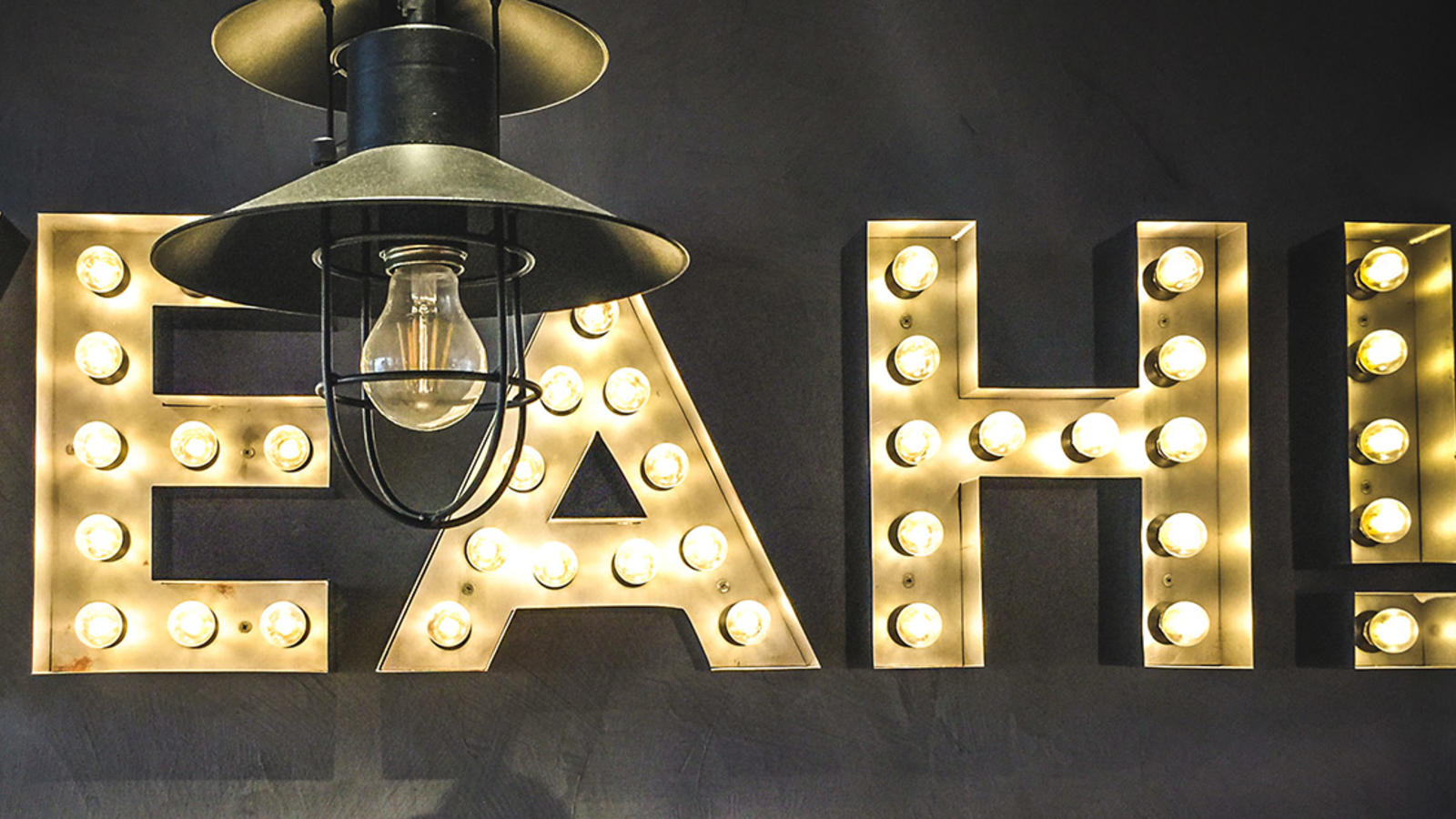
Get To The Point
How Did We Get So Hooked On Exclamation Points?
By Jennifer (Jennie) Latson
How Did We Get So Hooked On Exclamation Points?
If you really want to demonstrate your dislike for someone, end a sentence with a period.
“Thanks so much.” “That’s great.” “Happy birthday.” As a line in an email, a text, or a Facebook comment, any of these will effectively convey your contempt and devastate the recipient. By now, we all know that if you actually mean it, you’ll use an exclamation point — or several.
In one recent study, undergraduates at Binghamton University-State University of New York reported that text messages ending in a period struck them as abrupt and insincere. As the Wall Street Journal reported, “It’s especially bad in the workplace, where an exclamation point can suggest anything from actual excitement or gratitude, to general friendliness, to reassurance that 2 p.m. works for a meeting, to… ‘I’m not mad about the other day. I swear, it’s fine!’ ”
How did the exclamation point come to dominate our correspondence? It started with a cultural shift in the way we communicate, linguists say. As written communication — via email, text, instant messaging and social media — came to replace many of our in-person conversations, we lost a vital element of expression. Words, after all, are only part of communication: tone is equally crucial, and notoriously difficult to convey in writing. In person, you can say “thank you” sarcastically with a sneer, or genuinely with a smile. In writing, your options are more limited. That’s where the exclamation point comes in.
“The single exclamation mark is being used not as an intensity marker, but as a sincerity marker,” linguist Gretchen McCulloch told The Atlantic’s Julie Beck. “If I end an email with ‘Thanks!,’ I’m not shouting or being particularly enthusiastic; I’m just trying to convey that I’m sincerely thankful, and I’m saying it with a bit of a social smile.”
In fact, one exclamation point is barely enough, even in the buttoned-up world of business communication. “Digital communication is undergoing exclamation-point inflation,” Beck said. “When single exclamation points adorn every sentence in a business email, it takes two to convey true enthusiasm. Or three. Or four. Or more.”
Where does it end? The problem with runaway inflation — exclamatory or otherwise — is that it doesn’t, says James Weston, a finance professor at Rice University’s Jones Graduate School of Business.
In a (mostly) tongue-in-cheek email, he writes: “Inflation in any form is dangerous! Once inflation starts, it gets very hard to stop!! Each time inflation rises, it makes the past inflation look tame!!!! It always feels like a good decision in the moment!!!!!!!! But the long-run societal consequences of inflationary policy are devastating!!!!!!!!!!!!!!!! Hyperinflation is, more often than not, a precursor to war!!!!!!!!!!!!!!!!!!!!!!!!!!!!!!!!”
Not everyone is worried. Geoff Nunberg — a linguist at UC Berkeley’s School of Information and the author of “Ascent of the A-Word,” along with several other books about language — doubts that exclamation point inflation will bring on World War III.
“I’ll be alarmed if I see multiple exclamation points starting to bristle in the pages of the New Yorker or the New York Times,” he says, “but I find it hard to get indignant when they pop up in texts, tweets or informal email exchanges, which are really just the written versions of communications that used to take place orally.”
Still, the English majors among us cling to the doctrine that an exclamation point should be reserved for extreme circumstances (for example: “Shark!”). Multiple exclamation points, we insist, are grammatical overkill, permissible only in the rarest of cases (“Oedipus, she’s your mother!!!”). But since our arguments typically end in periods, they haven’t garnered much attention.
Exclamation points are, after all, the Swiss Army knife of punctuation marks. They can be used to express a variety of emotions: excitement, glee, disbelief, outrage or anger. The writer doesn’t even have to commit to a usage; it’s up to the reader to interpret as she sees fit.
“Exclamation points are emphatic, but offer no inclination, affect, or meaning other than the superlative. They are loud but neutral,” explains Judith Roof, the William Shakespeare Professor of English at Rice.
That makes them a popular choice for the linguistically lazy. “Ultimately and sadly, I think the use of the exclamation point is also linked to the last 15 years’ gradual loss of vocabulary, expressive capacity, and overall linguistic mastery,” Roof says.
Constance Elise Porter, a marketing professor at Rice Business, agrees that the exclamation point epidemic is partly an indicator of our deteriorating writing skills. Although we may communicate in writing more than ever before, the kind of writing we’re doing is brisker, briefer, and less thoughtful, she argues. When we exchange texts and tweets, short emails and quick Facebook updates, we’re sacrificing both style and substance for another priority: speed.
“In this world of fast and acceptably incomplete written communication, the exclamation point seems to be the communicator's way of capturing everything that just takes too long to actually articulate in the most exciting way,” she says.
It’s also a mark of our desire to seem interesting — to rise above the noise on social media, Porter says. Except, of course, that now everyone’s using them, so no one stands out. And that means that true exclamations — of the “Shark!” variety — may be obscured.
“Unfortunately, I think that what will happen is that we will begin to ignore the true meaning of the exclamation point — like the boy who cried wolf — and a truly meaningful, alarming, scary or otherwise escalated-emotion-laden event will have difficulty breaking through the clutter,” Porter cautions.
But English majors needn’t worry. “If this happens, then the greatest communicators will find a way for their voices to be heard,” she says. “The lazy communicators will remain lost in the sea of exclamation points.”
Jennifer Latson is a staff writer and editor at Rice Business and the author of The Boy Who Loved Too Much.


